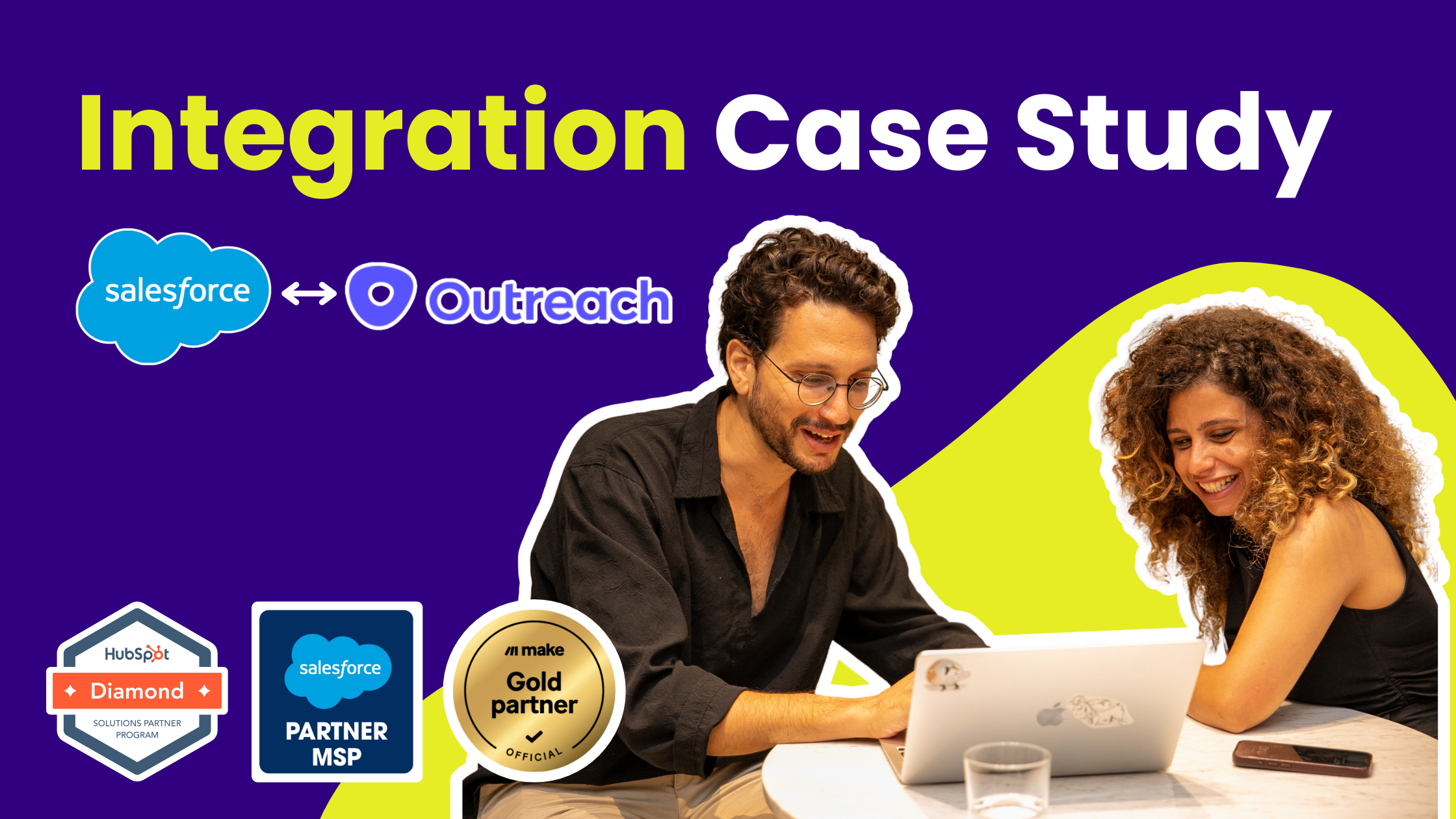How we Helped this B2B Tech Enterprise Gain a 360-degree View of its Sales Funnel
We recently worked with a B2B Tech Enterprise to help their sales team gain a 360-degree view of their sales funnel in Salesforce by integrating it with Outreach (where they executed most of their outreach automation and personalization). This case dives into what we did - on both the strategic and technical side.
Their SDR, sales, sales operations, and revenue operations teams primarily used Salesforce to manage leads and track sales activities across the sales pipeline. Alongside Salesforce, they used Outreach to automate and personalize outreach efforts, such as email sequences, calls, and social touches. While Salesforce is great for managing customer data, Outreach helps in executing and managing your sales engagement strategies more efficiently.
To give full visibility on the sales interactions with leads in their CRM, they knew they needed a solid integration with Outreach - where most of their sales activities took place - and Salesforce - where they managed the opportunities in the funnel and managed the reporting. This integration was crucial to ensuring transparency across teams by aligning the sales process and making the prospect journey visible to all users.
Let’s dive into the details!
64% of SDRs Time on Non-Revenue-Generating Tasks
Without integrating Outreach and Salesforce, the SDR and sales team has data silos, inefficient workflows, and missed opportunities. Studies show that sales reps spend up to 64% of their time on non-revenue-generating tasks, much of which involves manual data entry and tool-switching, which could be automated through integration. This lack of integration led to a disjointed sales process, where they noticed leads falling through the cracks due to inconsistent tracking of engagement activities. Additionally, without real-time syncing, key insights from customer interactions in Outreach weren’t reflected in Salesforce.
It all came down to two main challenges they wanted to tackle:
- Time wasted on manual tasks - Most follow-up processes, emails, call notes, and field updates had to be performed manually. These manual tasks wasted hours of the salespeople's time and ultimately decreased crucial customer-facing time.
- Incomplete data - the Outreach data wasn’t syncing to Salesforce. That meant that critical communication with leads wasn’t reflected on the lead record and in reports, making it difficult to track the leads progress and salespeople’s productivity.
From Strategy to Implementation
To solve the challenges, we took a structured approach to integrating Outreach and Salesforce. First, we mapped out the entire sales process, working closely with the SDR, sales, sales operations, and revenue operations teams to understand their specific needs and pain points. This collaborative effort allowed us to design a seamless flow where the prospect’s journey in Outreach would be accurately reflected in Salesforce.
Once the process was mapped out, we focused on the technical integration. We ensured that data synced between the two systems was consistent and reliable, so that information in one platform was always up-to-date in the other. This involved setting up automated workflows and aligning data fields between Salesforce and Outreach. Now we could ensure that both platforms worked in harmony and provided a unified view for all users :)
Here’s how we automated personalized email correspondence with Outreach:
The company used HubSpot’s marketing emails once connecting with the leads. This was due to their strong HubSpot and Salesforce integration, however, as the emails were marketing emails, they often ended up in the promotions inbox, and were all in all, less personal and less fitting for the start of a sales process.
The team wanted to send emails directly from the SDRs (using Outreach) so we could both send a personal one-to-one email and track the sends/responses directly from Outreach - where the SDRs and Salespeople primarily worked.
Now that we had a fully functional integration with Salesforce and Outreach, we were able to automate this ‘personal one-to-one’ communication directly from Outreach rather than HubSpot.
Here’s how the process looked:
- After a potential customer clicked on a signup link, the Hubspot system sent a generic follow-up email with a company signature, which felt impersonal. The next step in the funnel was a call with the SDR - but many leads didn’t convert immediately at this stage. As they were using marketing emails, they didn’t have specific meeting links per lead owner in the email and often ended up in the lead’s ‘Promotions’ inbox. This slowed the conversion process
To address this, we moved the automation to Outreach. Now the process looks like this:
- Direct emails are sent directly from the SDR team with a personalized message and their link to schedule a meeting, shortening the lead process, creating a more personalized flow, and improving effectiveness. Immediately, we saw an increase in meetings booked after the first email was sent.
Although both systems could send the email with the same copy, there are two benefits to sending the email from Outreach:
- The SDR team uses Outreach and it makes it easier for them to track the full communication with the lead in one system
- With their HubSpot subscription (Marketing Enterprise), we just have the ability to send Marketing emails, rather than one-to-one sales emails, or as the tool is called in HubSpot - Sales Sequences. Using Outreach allows email communication to look super personal while being automated.
Increased Customer Facing Time for Sales
Integrating Outreach and Salesforce created a more aligned and efficient sales process. With synced data, all team members had a clear view of the prospect’s status, reducing miscommunication. Sales automation cut down on manual tasks, allowing the SDRs and Sales teams to focus on what they do best - actually speaking to leads and selling! As a result, this streamlined sales process led to better engagement with prospects and improved overall sales performance.



Comments